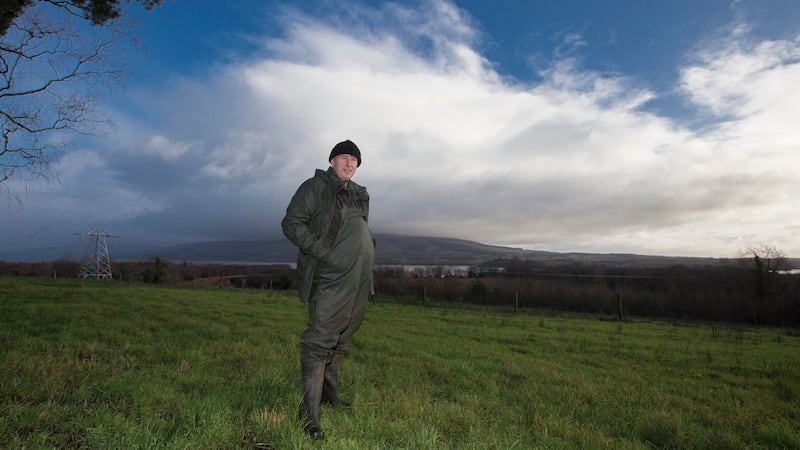Tommy Earley remembers well the day when a wildlife ranger spotted a rare species of orchid on his land at Mount Allen, Co Roscommon.
“He dropped to his knees and started peeling back blades of grass and said, ‘Do you know what you have here?’ ” the farmer recalls.
Earley freely admits that he did not know and had never heard of the Irish Lady’s Tresses orchid until that day 17 years ago.
One of the first things he did was put a fence around the protected species, which can take up to eight years to flower, as his cattle had been grazing in the area close to the shores of Lough Allen.
The discovery excited people in the know so much that Earley, to his bewilderment, soon saw the farm, which sits underneath the Arigna mines close to the Roscommon-Leitrim border, become an attraction.

“It was like finding a little diamond in the grass. I had nine car loads from the Botanical Society of Britain and Ireland here one day,” he says. “One lady travelled from Scotland, which is a long way to come to see a flower.”
Earley, who switched to organic farming in 1996, has since welcomed thousands of people eager to see first hand the work he has done protecting habitats and to observe the different species that have flourished there as a result.
As Cop26 concluded this weekend, Earley, an Irish Wildlife Trust biodiversity champion, is hopeful a path to protecting the environment from the worst effects of climate change can be found.
He notes that several neighbouring farmers have been studying his efforts to store carbon by “rewetting” 25 acres of raised bog on his land. The project is taking place under the watch of Dr Raymond Flynn, a hydrologist at Queen’s University Belfast.
“I could drain it tomorrow and put grass seed on it and put in cattle but it’s a very scarce habitat,” says Earley, who has identified 15 species of moss on the bog since the project started.
“Bogs have been there for thousands and thousands of years, storing carbon all that time. It’s like a history book under our feet. Who am I to change that?”
Walking tours
Not only are neighbours coming to help, with a view to using their own bogs to sequester carbon, but the Earleys also host walking tours on the farm, where rare species, including the protected butterflies Marsh Fritillary and Large Heath, can be found.
Another pet project for Earley, who farms 100 acres, has been a successful attempt to draw back the curlew by controlling predators such as the grey crow and fox. Ireland’s curlew population is believed to be on the brink of extinction, but this year, with the help of ecologist Dr Sean Kelly, a pair of curlews who raised three chicks were tracked on the farm.
“It’s lovely to hear the call of the curlew again and hopefully there will be more around now,” he says.
Earley loves welcoming visitors to the farm, whether for the dawn chorus walks, to observe the work being done restoring the bog or to admire his “butterfly meadow” .
“It’s great to see the farm though their eyes. Visitors see different things, and you can learn a lot from them about the place you lived in all your life,” he says.
Many guests are fascinated by the history attached to his home, Mount Allen House, originally the seat of the O’Connor family, who had 800 acres there and had strong links to Wolfe Tone and composer Turlough O’Carolan.
“It’s an old house,” says Earley in understated fashion about the property, which dates from 1671.
Financial incentives
The Earleys moved there in 1888 when his grandfather, Michael Earley, who had worked there in his youth, returned from a stint as a steelworker in the US and bought the place.
One path running through the land was the original Mohill to Carrick-on-Shannon road, and this was the route taken by General Humbert on his ill-fated march to Ballinamuck for the battle that marked the defeat of the main force of the French incursion during the 1798 rebellion. Two of the O’Connor clan joined up with Humbert and, as a result, had to flee to the US.
“One of them had a grandson, Charles O’Conor of New York, who in 1872 became the first Catholic nominated to contest the US presidential election,” says Earley.
Earley says it is good to see the focus Cop26 has put on climate change, but “at the end of the day we all have to play our own part”. Farmers have proven in the past that they are willing to do what is required, he says.
“When farmers were told to grow grass and produce more, they did that. There was no value [placed] on biodiversity then,” he says.
“Farmers are willing to restore their bogs in the public interest. I think there will be financial incentives for them to do that because farmers have to make a living, and this is for the public good.”

















